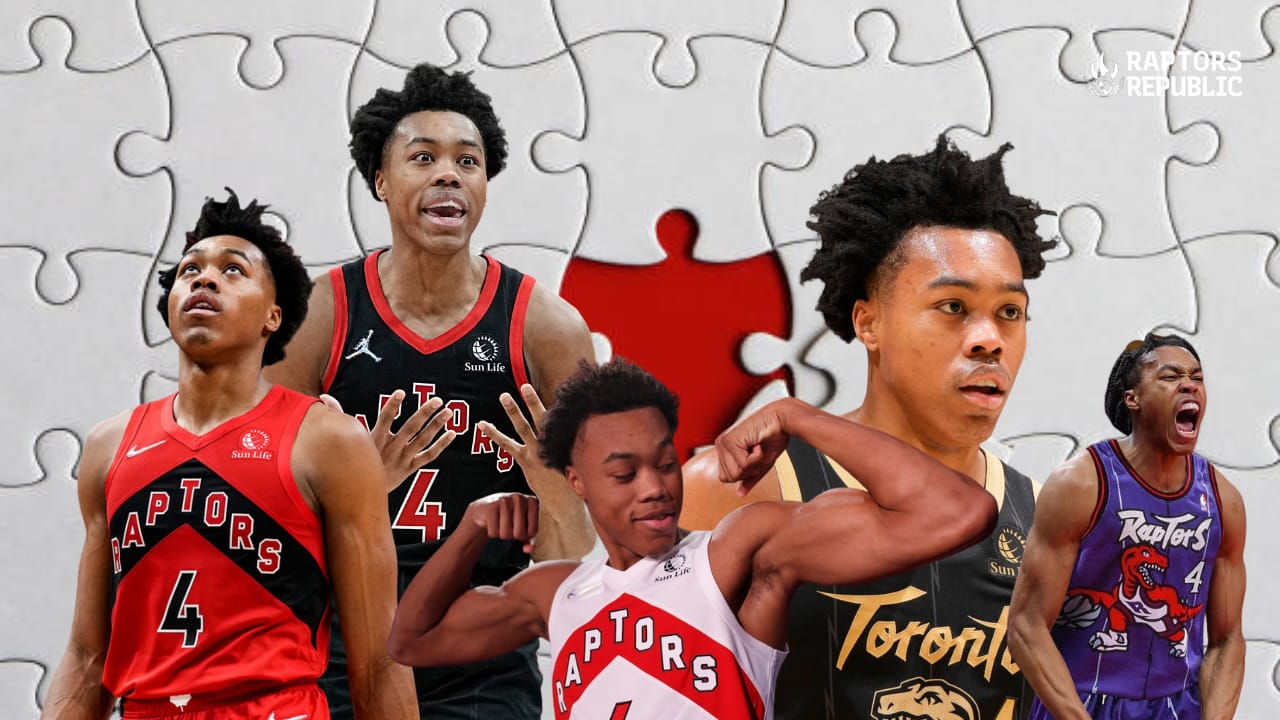Tempo as a tool is best employed, broadly across human endeavoring, by the most maniacal among us. Think horror-movie suspense, late-career Chris Paul, or J.K. Simmons in Whiplash. The best know when to drag, and when to rush, and when to leave our stomachs in a lurch by doing either. And, after his masterpiece against the Milwaukee Bucks, we can add Scottie Barnes to the list of "the best," or at least on his way to it.
This is my third Diary of a Genius entry about Scottie Barnes. The idea is to show how Barnes doesn’t just do something brilliant in a single, defined area of the game, but also how he uses his brilliancy in one momentary area to open up another approach later in the same space. Think when Scottie Barnes used a skip pass to, on the next possession, open a lane for a bullet pass underneath the rim, documented in the inaugural Diary of a Genius piece on his passing. The second entry was on his finishing. This will be different. (In part because I considered using Arnold Schoenberg as the lede again here because, you know, tempo, but I thought it might be too on the nose.)
Getting anywhere you want on the court can be done in so, so many ways. You can just be faster than anyone else. You can dribble the ball in ways that leave defenders in the wrong places, that leave them grasping and gasping for air. You can be so good at shooting that defenders simply throw their bodies at you 30 feet from the hoop like extras in a war movie.
Barnes of course has none of those qualities, not yet. So how can he get where he wants to on the basketball court? How does he dribble the ball from behind the 3-point line to the rim? Previously in his career, he rarely did outside of transition. But he was able to, and frequently, against the Bucks by opting for the most devilish way to move himself around the court.
You can be a maniac. You can hold onto the punch line for much, much longer than you need to, wrong-footing your audience. (Norm MacDonald.) You can rush past your punch line breathlessly, leaving your audience a step behind, marveling. (Anthony Jesselnik.) Selecting either option at its extremity is the realm of a sicko. The realm of Scottie Barnes.
In the first quarter against the Bucks, Barnes started contributing immediately. His jumper was compact and without hesitation, as it was all night, leading him to finish the game shooting a tight 3-of-3 from behind the arc. In a sense, shooting without hesitation is a form of tempo, but we’re going to get much, much deeper, here. Corner triples from Barnes -- thought he only attempts a miniscule 5 percent of his shots from the region -- are a revelation. His success there is meaningful, both for his own efficiency and for his ability to stretch the court to its full width for his teammates. (They did not take advantage against Milwaukee.)
Still, for Barnes to cash his jumpers is significant; this is what Siakam saw on his drive.
That’s a whole lot of advantage-creation by Siakam. And it’s on Barnes to turn that into points on the board. He did. (Barnes is quietly shooting 34.8 percent on triples from the corner in his career, much higher than his 30.0 percent overall.)
However, the majority of Barnes’ work is done as a creator. Only a few moments later he sets the tempo by which his metronome will tick for the remainder of the game. He sets it slow, intermittent, letting the ticks ring out in between his pacing.
It is sometimes best for great athletes to move slowly. The best players move at multiple speeds, and it’s generally more intuitive to speed up than it is to slow down. (Those who can slow down with force, like James Harden, can make a career out of it.) But the best players will often set their metronomes slow, keeping their power coiled at all times, threatening to erupt. From such suspense can ulcers, or pick-and-roll masterpieces, be born.
That’s less a dime (not one at all) than a flag in the ground, stating ‘this is my tempo.’ Defenders become accustomed to that, however, so Barnes very quickly uses their expectations to his advantage. He takes another high pick-and-roll touch, again reaching the paint -- Milwaukee goes over picks, giving Barnes an advantage there. Once again, Barnes has his primary defender on his hip and the big defender in front of him. Once again, he slows down, thus engaging the big -- who just saw him find an internal passing lane doing this -- and bringing the tagger closer to the paint to close the lane for the lay-down. Then Barnes uncoils his slinky, slinging the ball to a completely uncontested weak corner. His pacing creates extra space for Malachi Flynn upon the catch.




